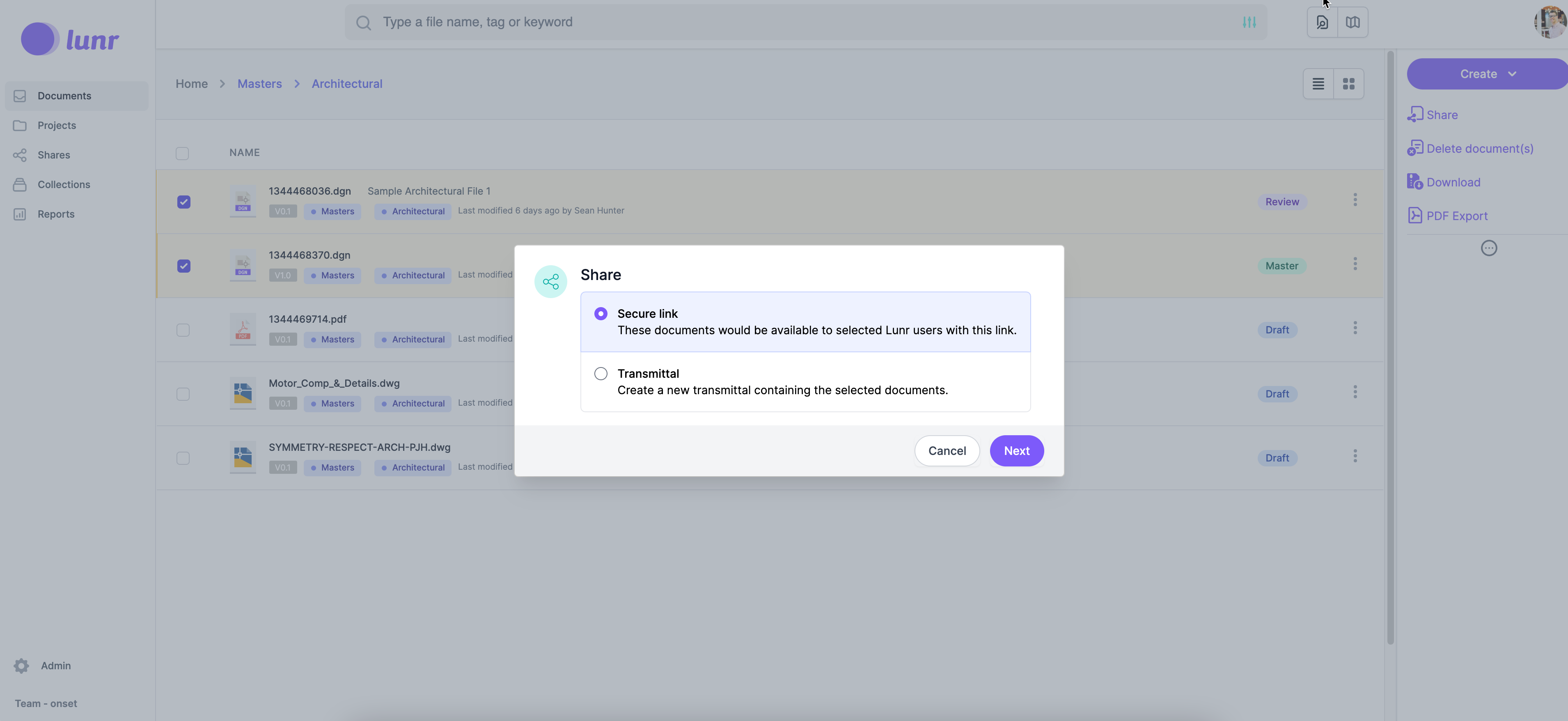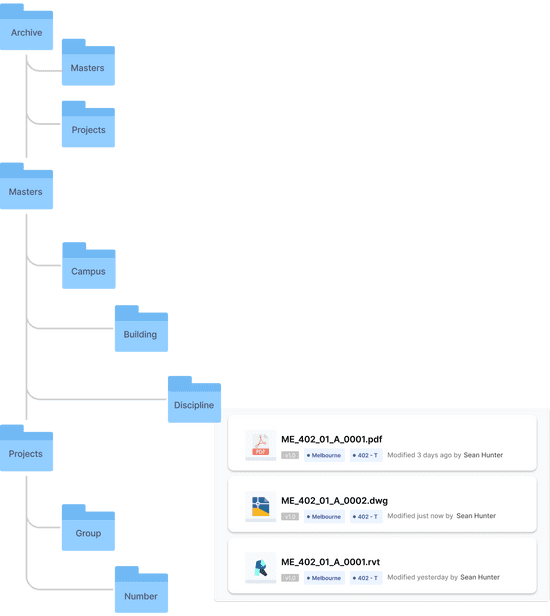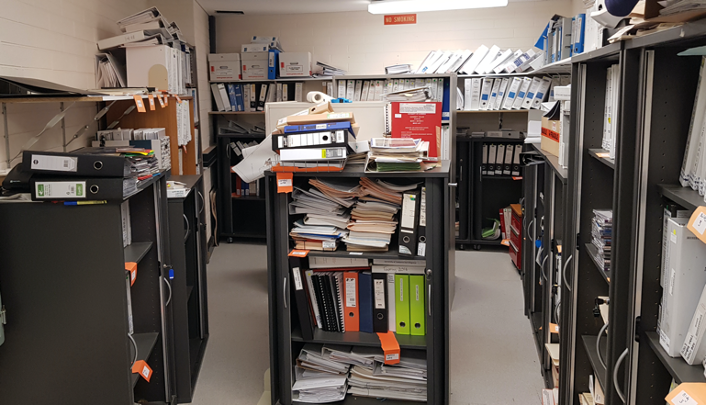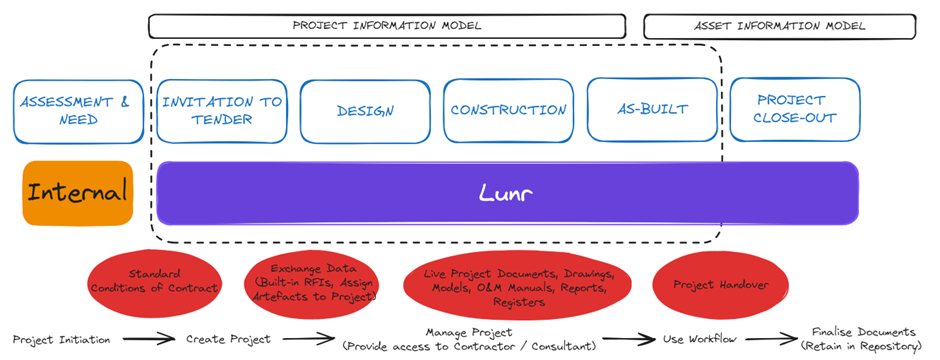Sharing documents with Lunr

One of the key benefits of a cloud-based EDMS (Engineering Document Management System) is the ability to easily share documents with people inside or outside your company. There are three ways to do this in Lunr, each suited to different scenarios. In this article, I'll outline the how and why of each of these methods.
1. Secured link
The simplest option for sharing documents in Lunr is to send a secured link to the documents. This is as simple as selecting the documents from the folder browse page and clicking the share button.
In this case, the user receives an email link to download the shared package of documents. If the recipient isn't already a member of your Lunr team they'll receive an invite to sign up before they access the files, striking a balance between simplicity and security.
The convenient thing about this method is that you can send the files to a user that wouldn't ordinarily have access to those folders. You can also set the link to expire after a given time-frame to limit the access period for these files.
2. Transmittal
This option works similarly to option 1. You can select a list of files to include in your transmittal, and click share to initiate the transmittal process. With a transmittal, you also need to specify the issue purpose.
With transmittals, in addition to the shared files, a Transmittal cover sheet is automatically generated and attached to the email. The cover sheet includes the following details:
Sender details
Recipient details
Issue purpose
Documents (including revision number)
Transmittals are useful at the early stages of a project before users have been invited to collaborate in a live Lunr project workspace.
3. Lunr project workspace
Lunr projects are the recommended way for all members of a project team to collaborate on document changes. To share documents with users via a project simply invite the users to the project, and assign the documents to the project. Once the document is assigned to the project they're available for workflow initiation by the responsible parties.


